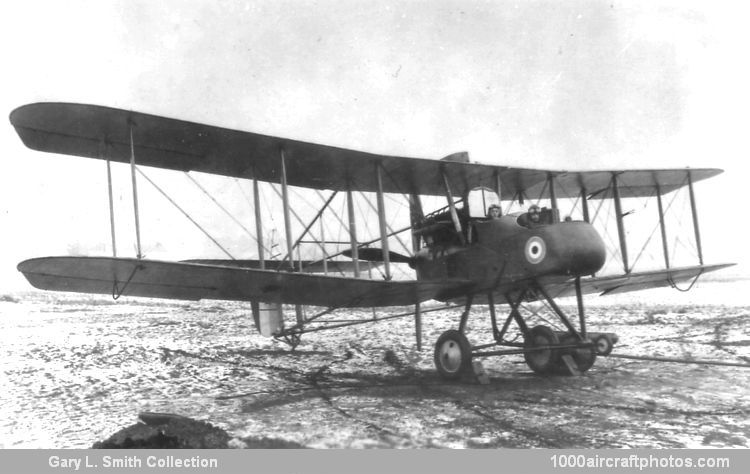03/31/2012. Remarks by Johan Visschedijk: "In August, 1913, the Royal Aircraft Factory had drawn up a two-seat pusher biplane as an original fighter design from the outset. Designated F.E.2a it remained an unbuilt project until the war started. The War Office then decided that the RFC needed a potent fighter immediately and ordered twelve from the Factory. Some five months elapsed before the prototype F.E.2a was ready in January 1915, and when it appeared it could be seen that the new machine had lost the fairly shapely lines which had graced the last version of the F.E.2.
The F.E.2a, with its three-bay 47 ft 9 in (14.55 m) span wings, enlarged nacelle and sturdy oleo landing gear, was a pugnacious, hefty-looking machine powered with an 100 hp Green engine driving a two-blade propeller. The Green was shrouded by a metal cowling and the pilot was raised well up in his cockpit so that he could see comfortably over the observer in front of him. Between the tail booms the trailing edge of the upper wings was hinged so that, aft of the rear spar, it could be turned down to function as a landing flap.
The pair of skids on the landing gear converged at the front to carry a small third wheel as a nose-over preventative. Although the Green power plant had been exceedingly useful a few years previously in getting many different early machines into the air, its comparatively low power/weight ratio told against it in a type which, for its role, demanded the best possible performance.
Within two months, in March, 1915, a revised version using the more powerful 120 hp Beardmore appeared and was redesignated F.E.2b. The new engine was mounted without a cowling and another alteration was the deletion in the F.E.2b of its predecessor's airbrake. Although the need was so great, production was extremely slow in getting under way and it was not until another eight months had passed that the initial order for twelve was completed. The first arrived in France on May 20, 1915, for use by No. 6 Squadron but it took a further four months to enable the unit to muster but four F.E.2bs.
As a design, therefore, the F.E.2b was more or less obsolescent by the time that it started flying over the lines but, none the less, proved itself a very useful type. Later it was used extensively for night bombing and in 1918 remained in service for this work with eight squadrons as well as with one squadron for night fighting and four squadrons for night training."
